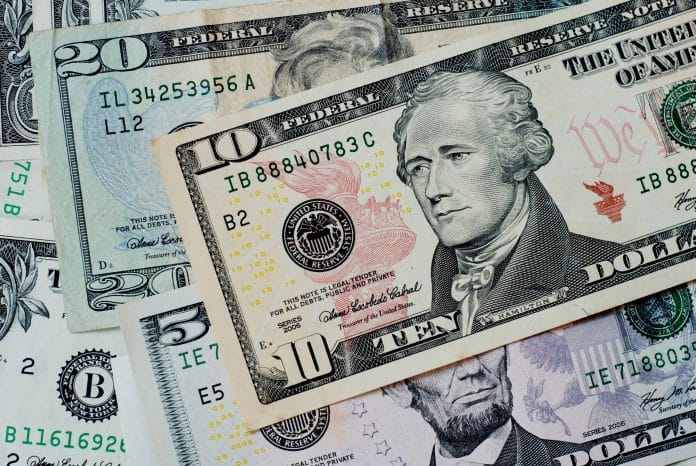
There comes a time when unfortunate circumstances can occur to a person, making them unable to work and earn a living. Thankfully, the federal government has programs such as the Social Security Disability Income (SSDI) and Supplemental Security Income (SSI) to help them survive financially. However, applying for these programs can be a very long process. So, what do applicants do while waiting to receive their benefits from those programs? Fortunately, the federal set up a system commonly known as back pay to compensate them for their wait. Back pay is not the official name for that system, the Social Security Administration (SSA) actually calls it post-due benefits. But, back pay is just the name commonly used by those who have experience with that process.
What Is Back Pay?
As we mentioned above, the process of applying for benefits through SSDI and SSI can be pretty long. There’s often a long gap between when a person is eligible to receive those benefits, and when they actually start receiving them. Back pay is basically the benefits a person is entitled to receive between when they started being eligible, all the way till when the government actually approved their application.
How Does Back Pay Work With Social Security Disability Income (SSDI)?
The Social Security Administration (SSA) created the Social Security Disability Income (SSDI) to help individuals with diseases that challenge their abilities to make livable incomes. To receive SSDI benefits, eligible applicants must submit their applications to SSA. As you can probably imagine, SSA has to process tons of those applications on a regular basis. That’s why these applications can take a while to process and get approved. Besides that, there are many other factors that can affect whether a person’s application gets approved straightaway or not. Any issues with the information and/or documents the applicant provides may result in delays.
Let’s say an applicant (we’ll call Person A in this case) has a disease SSA deems eligible for SSDI. Let’s say Person A’s disease gets worse over time and now Person A cannot continue to do his job. That means Person A is now no longer able to earn their own income due to their disability. So, let’s say Person A has to quit their job on November 14th, 2020. SSA will then recognize that date as Person A’s ‘onset date’. Person A goes to SSA and applies for his disability benefits. The process, as we mentioned, takes time. In one of the worst scenarios, Person A’s application gets rejected, but Person A still wants and believes they deserve their disability benefits. Person A may then submit an appeal and get a hearing from an administrative judge.
In Case The Appeal Works Out For Person A
In case Person A files for that appeal, they will have to gather all documents and evidence to get a ruling in their favor. Things work out with the administrative judge and they rule that Person A is entitled to SSDI benefits. That happens on January 4th, 2022. At that point, SSA would start calculating Person A’s disability benefits, based on their income. Let’s assume Person’s A benefits amount to $1,400 per month.
Great, now Person A legally deserves $1,400 of SSDI benefits per month. But, what about all the benefits Person A missed out on while waiting to get approval on their application? Well, that’s where back pay kicks in. Back pay will then calculate how much Person A deserves to get in SSDI benefits starting their onset date.
Person A’s onset date was on November 14th, 2020. And, SSA approved their application in January 2022. That means there are about 14 months between those dates. Typically, SSA takes 5 months to start paying SSDI benefits. That means Person A deserves 9 months of SSDI back pay. That should amount to somewhere around (9 months x $1,400) $12,600.
A Quick Tip About Legal Representation During The Appeal Process
In most cases, Person A needs to get approval from SSA regarding the legal representation fee. Typically, SSA sets a maximum for legal representation fees at 25% of the back pay or at $7,200. SSA will choose whichever is the lowest of the 2 amounts. If Person A gets $12,600 in SSDI back pay, then SSA will deduct ($12,600 x 25%) $3,150 out of their back pay for legal representation fees.
How SSA Pays Back Pay Money
First of all, there’s no limit on how much SSA pays in benefit back pays. For SSDI benefits, the government usually pays the whole amount in a lump sum to eligible beneficiaries. However, the government will still tax a portion of it, because it’s still ‘income’.
Things Work A Little Differently With The Supplemental Security Income (SSI) Program
To understand how back pay works with Supplemental Security Income (SSI), we must first understand how the program works. The government uses this program to help low-income Americans. But, the program is not just for any low-income Americans. The federal government created SSI to help out Americans who have physical limitations that get in the way of making a higher income. The government specifies a certain list of criteria to clarify who qualifies for SSI:
- At least 65 years old or above, and/or;
- Have a physical disability that prevents you from having the ability to work that will last at least a year or result in death and/or blind
- Have limited income and resources
- Be a US citizen or an eligible immigrant
- Live in one of the 50 states, the District of Columbia, or the Northern Mariana Islands. The government will make exceptions for children of military parent(s) assigned to permanent duty anywhere outside the United States or certain students temporarily abroad.
How SSA Calculates Back Pay For SSI, Compared To How They Calculate It For SSDI
Earlier we mentioned how SSA calculates back pay for SSDI benefits. There’s this whole thing with onset and application approval dates. We also talked about how SSA takes 5 months to start paying benefits. So, there’s quite a bit of math involved when it comes to back pay for SSDI benefits. There’s not much math involved when it comes to back pay for SSI benefits.
When it comes to SSI benefits, SSA does not need those 5 months until they start paying eligible recipients. SSA starts paying them starting the month their application was approved. If SSA owes you SSI back pay that is more than their monthly SSI monthly benefits limit of $943, then SSA will not send you the whole amount at once. SSA would instead break the amount into 3 separate payments, sent over the period of 6 months.


















